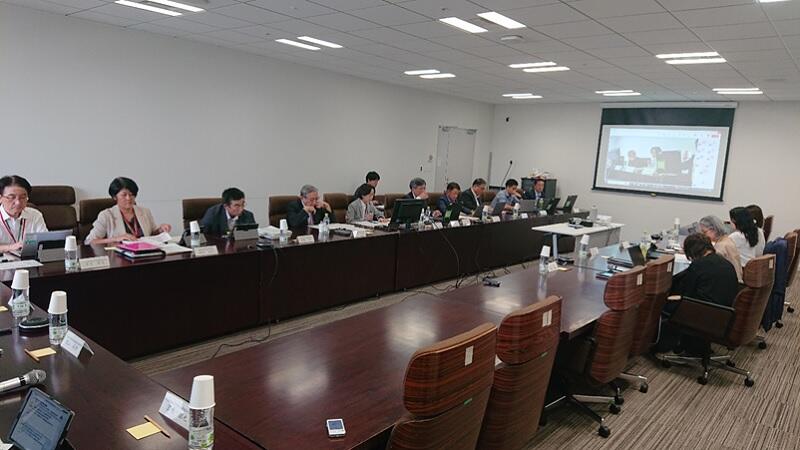Starting next April, the Japan Agency for Medical Research and Development (AMED) will move forward with eight integrated projects (PJs). Specifically, the eight PJs are the newly added ones − i.e., infectious disease control and translational and clinical research acceleration; and ecosystem enhancement - and the six ongoing integrated PJs that form a basis for the added ones. The expansion was presented at the AMED Council meeting as part of a review proposal on overall operations and organization at the end of the second medium- to long-term plan. The formal decision will be made soon. AMED will consider details such as the organizational structure and specific programs in each PJ. AMED has implemented five cross-disciplinary PJs, including pharmaceuticals and medical devices, and four disease area-oriented PJs, including cancer and brain, during the first 5 years since its establishment in April 2015 (first term).

In the second term starting in the fiscal year 2020, the PJs have been reorganized into six integrated PJs: advanced drug discovery and development; medical device and healthcare; regenerative medicine and cell and gene therapies; genome and health-related data; basic medical research; and seeds development and basic research. These integrated PJs have been managed according to specific diseases, such as cancer and mental disorders.
Although there was criticism regarding the PJ reorganization during the transition period from the first to the second term, AMED's self-evaluation (forecast) rates for the second medium- to long-term goal period were S for one item (PJ for advanced drug discovery and development), B for two items (finance and other operations), and A for all the remaining items, showing that the PJ reorganization was a success. For example, a PJ on diagnostic markers for pancreatic cancer underwent a smooth transition from the Ministry of Education, Culture, Sports, Science, and Technology to the Ministry of Health, Labor, and Welfare, resulting in the approval of a marker as a diagnostic aid. Based on the evaluation results, the Cabinet Office has proposed the eight third-term integrated PJs: advanced drug discovery and development; medical device and healthcare; regenerative medicine and cell/gene therapies; infectious diseases; data utilization and life course; seeds development and basic research; translational and clinical research acceleration; and innovation ecosystem. While some council members expressed concern that the PJ reorganization might cause confusion, the proposal was approved.
Accompanying support from basic research to practical application: "Effectively functioning" to form the basis of the third term: President Mishima's opinion
President Yoshinao Mishima of AMED, spoke about the eight integrated PJs proposed at this meeting: "The proposed PJ structure is significant because the policy statements in the healthcare plan and the medical area research and development plan send a major message to the research field. The second-term integrated PJ structure was evaluated, not only by program directors (PD), who have extensive academic experience and track records in R&D relating to each integrated PJ as well as knowledge on evaluation of R&D issues and related operational management, but also by disease area coordinators (DC), external experts with advanced expertise in their respective disease areas who are tasked with providing proposals and advices to the PDs."
"As a result of this evaluation, the development objectives have become clear, and the researchers' understanding of practical applications has evolved. Moreover, new cross-disciplinary medical technologies have become available for various diseases, and accompanying support from basic research to practical application from various perspectives has been promoted. Although there are still some issues to be addressed, as I stated at the expert panel meeting in June, my opinion is that the second-term integrated PJ structure is functioning effectively and should be the basis of the third-term integrated PJ structure, and I appreciate the direction in which it is heading."
"On top of that, I recognize that infectious diseases, which I also fought against during the second term, represent an important issue that we must prepare for during normal times for the next emergency situation."
"I also share the thought underlying the addition of translational and clinical research acceleration and strengthening of the innovation ecosystem, as pointed out by the Council of the Concept for Early Prevalence of the Novel Drugs to Patients by Improving Drug Discovery Capabilities. In addition, the life course, which has been presented along with data utilization, is an approach that links all life stages from infancy to elderliness. I believe that it continues to be important for managing disease areas.
"Overall, I think that the PJ structure covers the entire drug discovery and development process, from basic research and seed creation to clinical research/practical application and the ecosystem via research and development based on modalities. In the third term, to effectively and organically link PJs at a higher level, including collaboration within and outside AMED, it is important for AMED to have more budget flexibility, strengthen the promotion system, and further develop its think-tank-like function. As discussed today, we will consult with the government to realize these improvements."
This article has been translated by JST with permission from The Science News Ltd. (https://sci-news.co.jp/). Unauthorized reproduction of the article and photographs is prohibited.




